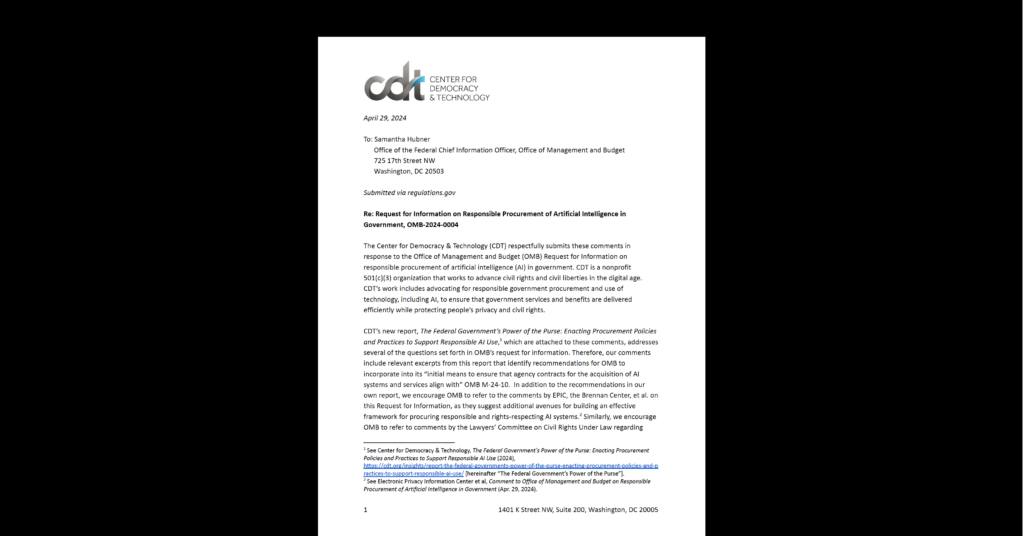Equity in Civic Technology, Privacy & Data
CDT Tech Tales: Thoughtful Approaches to School Technology at Science Leadership Academy
This post is part of CDT’s storytelling series on EdTech use and student privacy protection during COVID-19. Our experts have spoken with parents, teachers, district leaders, and state officials about how they’ve managed the transition to virtual learning (and in some cases the return of in-person instruction), leveraging data and technology and protecting the civil rights of students along the way. Check out the rest of the stories here.
“Technology can either free us or bind us — and we have to be thoughtful about if and when technology is binding students.”
Chris Lehmann
Chris Lehmann, founding principal of Science Leadership Academy (SLA) in Philadelphia, PA, says school leaders who view the shift to virtual classrooms as an opportunity to expand surveillance and monitoring are “doing it wrong.”
“The problem with thinking, ‘great, we can do more surveillance,’ is that when you have a hammer, everything looks like something to nail,” he told CDT. “Let students pass notes in class by sending the occasional chat – we did it when we were kids.”
SLA is a science and technology school with three campuses: two high schools and a middle school. Lehmann’s student-first approach to education has paid off during virtual learning – most students have adjusted fairly well, with a 97% attendance rate and 96% course passing rate.
He and his team have prioritized student privacy and equity concerns by, for example, not mandating that students have their cameras on during class. This is the subject of much national debate, as many educators maintain that teaching students whom they can’t see limits their ability to gauge student engagement.
“I understand why you would want your students to turn on the camera, but conversely, from a privacy perspective, you can’t demand to see into someone’s home,” Lehmann said.
Lehmann has been thinking a lot about changing expectations during remote learning when it comes to student success and well-being. SLA has always been a “tech-forward” school – each student received their own laptop well before remote learning – but transitioning to a virtual setting has demanded versatility in regards to both academic and “student life” interventions.
Lehmann analyzed student performance data and saw that fewer students were failing this year than last year, but students who were failing one class were far more likely to be failing multiple classes. To replace the in-person office visits and study halls students often attend to ask for help, Lehmann and his staff established virtual study hall sessions three times a week.
During virtual study halls, which all students are welcome to attend, teachers and SLA alumni devote time to schoolwork, organizational skills, and online time management. Though the sessions are remote, students report that just knowing Lehmann is there, even virtually, helps them stay on track.
“We did a survey of kids to see what was holding them back and saw that now, the sense of being overwhelmed was greater,” he said. “And before, students knew that if they were struggling they could come plop themselves in my office and we’d figure it out together.”
Evolving the school’s approach to student life management this year has also meant focusing on the goals of traditional interventions, not just the interventions themselves. Some tools, like suspensions, are in particular need of reevaluation during remote learning, since students are already isolated from one another.
This philosophy contrasts with approaches highlighted by recent media coverage, in which blurred lines between home, school, and technology have led to questionable disciplinary decisions. For example, recently, a 9-year old student in Louisiana was suspended from virtual school because he had a BB gun in his background.
“We tell students that all their emails and chats are archived – that’s not new,” he said. “But right now our focus is less on how to discipline students, and more on, how do we take care of these children during a pandemic? Technology can either free us or bind us, and we have to be really thoughtful about if and when technology is binding students.”
In order to provide education leaders and policymakers with guidance towards making equitable decisions about student privacy, CDT recently released a report titled “Protecting Students’ Privacy and Advancing Digital Equity.” Based on original research, the report recommends prioritizing privacy-focused teacher training and proactively communicating with parents about how schools are protecting their children’s data.
Read additional stories in this student privacy series here.


